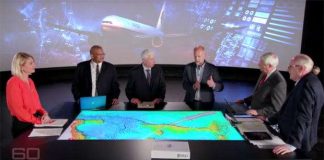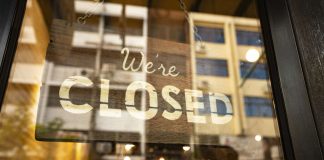APRIL 1, 2020
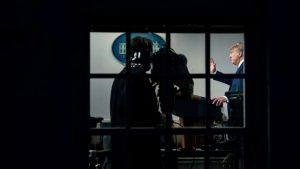
President Trump at a news conference on Tuesday at the White House. His assessment of the coronavirus has drastically changed from five weeks ago, when he was still likening it to the flu. – Erin Schaff/NY Times
WASHINGTON, D.C. — Five weeks ago, when there were 60 confirmed cases of the coronavirus in the United States, President Trump expressed little alarm. “This is a flu,” he said. “This is like a flu.” He was still likening it to an ordinary flu as late as Friday.
By Tuesday, however, with more than 187,000 recorded cases in the United States and more Americans having been killed by the virus than by the Sept. 11, 2001, attacks, the president’s assessment had rather drastically changed. “It’s not the flu,” he said. “It’s vicious.”
The grim-faced president who appeared in the White House briefing room for more than two hours on Tuesday evening beside charts showing death projections of hellacious proportions was coming to grips with a reality he had long refused to accept. At a minimum, the charts predicted that 100,000 to 240,000 Americans would die — and only if the nation abided by stringent social restrictions that would choke the economy and impoverish millions.
A crisis that Mr. Trump had repeatedly asserted was “under control” and hoped would “miraculously” disappear has come to consume his presidency, presenting him with a challenge that he seems only now to be seeing more clearly.
The staggering numbers publicly outlined on Tuesday had forced him over the weekend to reverse his plan to reopen the country by Easter, but they were hardly new or surprising. Experts have been warning of a possibility like this for weeks. But more than ever before, Mr. Trump seemed to acknowledge them.
“I want every American to be prepared for the hard days that lie ahead,” the president said, the starkest such effort he has made to prepare the country for the expected wave of disease and death. “We’re going to go through a very tough two weeks.”
Afterward, he added: “We’re going to start seeing some real light at the end of the tunnel. But this is going to be a very painful — very, very painful — two weeks.”
Under the best-case scenario presented on Tuesday, Mr. Trump will see more Americans die from the coronavirus in the weeks and months to come than Presidents Harry S. Truman, Dwight D. Eisenhower, John F. Kennedy, Lyndon B. Johnson and Richard M. Nixon saw die in the Korean and Vietnam Wars combined.
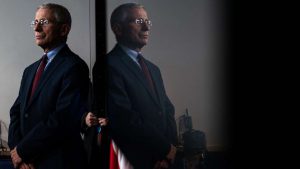
Dr. Anthony S. Fauci of the National Institute of Allergy and Infectious Diseases is among the experts who have credited Mr. Trump’s decision to limit travel from China with slowing the spread of the virus to the United States. – Erin Schaff/NY Times
The lowest estimate would claim nearly as many Americans as World War I under President Woodrow Wilson and 14 times as many Americans as Iraq and Afghanistan together under Presidents George W. Bush and Barack Obama.
That is a daunting realization for any president, one that left Mr. Trump now anticipating “the worst thing that the country has probably ever seen.”
A pandemic is not a war, of course. Mr. Trump did not choose to have a pandemic. But he will be judged on how he responded, and the reviews from many quarters have been scalding even as polls have shown rising public support. While he has framed himself as a wartime president and on Tuesday conceded the bleak picture more fully than ever before, he continued to rewrite the history of his handling of it.
Despite comparing it to the ordinary flu and saying for weeks that it would pass, the president insisted on Tuesday that he understood all along that it could be a killer of historic proportions. “I thought it could be,” he said. “I knew everything. I knew it could be horrible, and I knew it could be maybe good.”
Mr. Trump said he played down the seriousness of the threat because he chose to be reassuring. “I want to give people hope,” he said. “You know, I’m a cheerleader for the country.”
He said longtime business associates were advising him not to react aggressively to the virus, presumably out of concern for what it could mean for the economy, which now faces certain recession.
“I’ve had many friends, businesspeople, people with great actually common sense — they said, ‘Why don’t we ride it out?’” Mr. Trump said without identifying them. “A lot of people have said, a lot of people have thought about it, ride it out, don’t do anything, just ride it out and think of it as the flu. But it’s not the flu. It’s vicious.”
Despite the criticism, the president denied that he himself had been riding it out, pointing again, as he often does, to his decision at the end of January to limit travel from China, where the first major outbreak occurred, a move that came as airlines were already cutting back flights on their own. Experts like Dr. Anthony S. Fauci, the director of the National Institute of Allergy and Infectious Diseases, have credited that decision with slowing the spread of the virus to the United States.
But Mr. Trump cites it as if it were the only action that was necessary when specialists have said the benefit of the travel restrictions was diminished because the United States did not use the time that it bought to ramp up testing fast enough.
The president did not explain on Tuesday why testing was so slow, nor did he explain why he waited to recommend canceling large events, closing businesses and schools and limiting group gatherings until after governors began ordering it themselves. Nor did he explain why he publicly declared that the country could reopen as early as Easter, only to reverse himself days later, if he understood all along how bad the situation could get.
At the White House briefing on Tuesday, Dr. Fauci was asked whether the death toll could have been kept below the minimum 100,000 now forecast if social distancing guidelines had been put in place earlier. He said it depended on whether the virus had already arrived in the United States and spread further than was known early on.
“If there was virus there that we didn’t know about, then the answer to your question is probably yes,” he said. “Now, the only trouble with that is that whenever you come out and say something like that, it always becomes almost a sound bite that gets taken out of context,” Dr. Fauci added. “If there was virtually nothing there, then there’s nothing to mitigate.”
All of which is why public health experts have said that early widespread testing would have been so critical. “In a perfect world, it would’ve been nice to know what was going on there,” Dr. Fauci told Jim Acosta of CNN, referring to the earliest outbreaks in Asia. “We didn’t, but I believe, Jim, that we acted very, very early in that.”
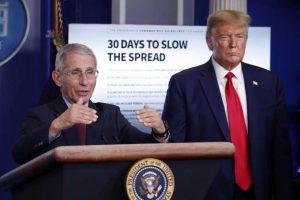
President Donald Trump listens as Dr. Anthony Fauci, director of the National Institute of Allergy and Infectious Diseases, speaks about the coronavirus in the James Brady Press Briefing Room of the White House on March 31 in Washington D.C. – (Alex Brandon/AP Photo)
Mr. Trump asserted that had he not blocked most travelers from China, the United States would have reached closer to the maximum projected death toll of up to 2.2 million. “When you look at it could have been 2.2 million people died and more if we did nothing, if we just did nothing,” he said, then he and the country “have done a great job.” In effect, he seemed to be setting up the argument that any death toll below that will be a validation of his handling of the crisis.
Whatever the eventual number will be, the pandemic of 2020 seems likely to rank with the deadliest of the past century. The worst came in 1918-20 and killed about 675,000 Americans, accounting for many of the military deaths attributed to World War I. Another pandemic in 1957-58 killed about 116,000 in the United States, and one in 1968 killed about 100,000. The H1N1 virus in 2009, for which Mr. Trump has assailed Mr. Obama’s response, killed only 12,000. The ordinary flu has resulted in 12,000 to 61,000 deaths annually since 2010.
Mr. Trump and his administration have stepped up efforts in recent weeks, expanding testing and seeking to work with governors to address shortages of ventilators, masks and other medical equipment. The president has dispatched medical ships and Army engineers to help, moved to force General Motors to manufacture more ventilators and, after flirting with an early reopening, extended social distancing guidelines until the end of April. Governors have both welcomed the help and complained that it is still inadequate.
For much of Tuesday’s marathon two-hour and 11-minute briefing, the longest single public appearance of his presidency, according to Factba.se, which monitors his activities, Mr. Trump took on a more somber approach as the scale of the fatalities seemed to sink in.
He jousted to some degree with Mr. Acosta and Yamiche Alcindor of “PBS NewsHour,” two of his favorite foils, but he was more restrained with them than usual and avoided some of the more incendiary language he often uses.
Yet he could not resist forever. By the time the briefing ended, he had lapsed back into complaints about the impeachment “hoax” and renewed his attacks on critics like James B. Comey, the former F.B.I. director, and Mr. Comey’s onetime deputy, Andrew G. McCabe, while congratulating himself for his performance. “Did it divert my attention?” the president asked of the impeachment. “I think I’m getting A-pluses for the way I handled myself during a phony impeachment.”
Still, Mr. Trump, rarely a reflective person in public, mused about the human toll of the pandemic more than he did in the early weeks of the crisis apparently because it has hit his own circle. As he has in the past couple of days, he referred to an overwhelmed hospital in his childhood home of Queens and an unidentified friend he said had been hospitalized with the virus.
“When you send a friend to the hospital and you call up to find out how is he doing,” Mr. Trump said, “it happened to me where goes to the hospital, he says goodbye, sort of a tough guy, a little older, a little heavier than he’d like to be frankly and you call up the next day, how is he doing? And he’s in a coma. This is not the flu.”
Courtesy/Source: NY Times









































































































